If you are a new owner of a German Shorthair Pointer, you might be at your wit’s ends trying to figure out just how to tire out this wild dog breed.
As an owner of many years of GSP’s, I have a few tricks up my sleeve to share and help you to tire your GSP out.
The German Shorthaired Pointers are a breed that is known for their endurance and stamina.
They have been bred to be able to work in all weather conditions, including extreme heat and cold. The dogs are also known for being very active and energetic.
This makes them an ideal family pet as well as a working dog. German Shorthaired Pointer puppies come with a lot of energy and need lots of exercise.
If you want your puppy to grow up into a healthy adult dog, then it’s important to provide him or her with plenty of exercise.
You should think about getting your puppy started on its training when he or she is young so that they will learn how to behave properly from an early age.
There are many ways to tire out a german shorthaired pointer, Some of these ways include:
You can make your fun by running around the yard with your German Shorthaired Pointer. It will help to develop his or her legs and give him or her some exercise.
Running around the yard will also help to keep your puppy occupied while you’re busy doing other things.
This way you’ll be able to get more done at home without having to worry about keeping your puppy entertained.
For example, if you have a garden, you could take your puppy outside to run around and play in the grass.
This is another great way to tire out your german shorthaired pointer. You can use a ball or toy to throw across the yard.
Your puppy will chase after the ball and bring it back to you. You can do this several times throughout the day. This will help to keep your puppy’s mind alert and focused.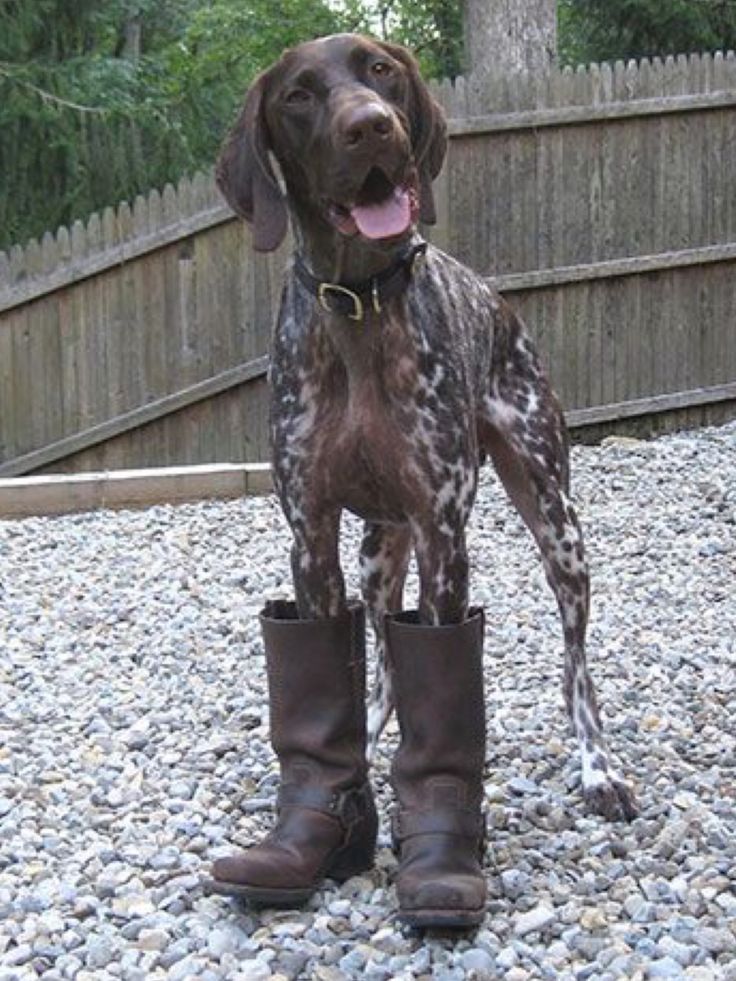
Eusoh isn’t just Healthcare for Your Pet…It’s SO MUCH MORE!
Affordable, No Price Hikes and a Complete Pet Healthcare Plan.
Learn More
If you want to get your german shorthaired pointer involved in a game, then you can try tug-of-war.
All you need to do is tie two pieces of rope together and put one end through the middle of a large stick.
Then you can attach the other end to your puppy’s collar. When you let go of the stick, your puppy will pull on the rope until he or she gets tired.
You can do this indoors or outdoors. Normally, you should only allow your puppy to play tug-of-war once per week.
Another good way to tire out your puppy is to teach him or her to fetch sticks. You can buy special toys made just for this purpose.
These toys contain small holes that your puppy can fit through. Once your puppy has learned how to retrieve the stick, you can start throwing it further away from you.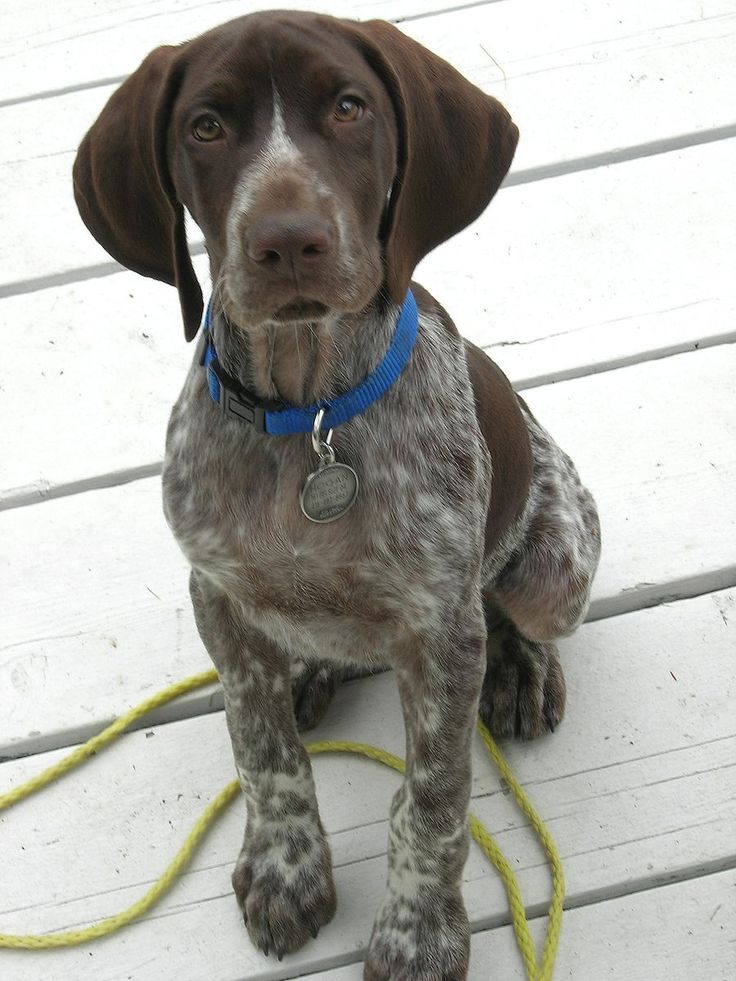
This will help to build your puppy’s endurance and strength.
Another way to tire out your pup is to teach him other commands. You can teach your puppy basic commands such as sit, stay, down, and come.
As your puppy learns these commands, you can add new ones to his or her repertoire.
For example, you can teach your dog to shake hands. To do this, you can hold your hand out towards your puppy and say “shake”. Your puppy will reach out his or her paw and shake it.
You can repeat this process over and over again until your puppy understands what you mean.
One of the best ways to tire out your dog would be to play with him or her. Puppies love playing and having fun. You can play with your puppy using different types of toys.
You can even set up a puppy obstacle course where you place various items throughout the house.
These training programs will help to strengthen your dog’s coordination and balance.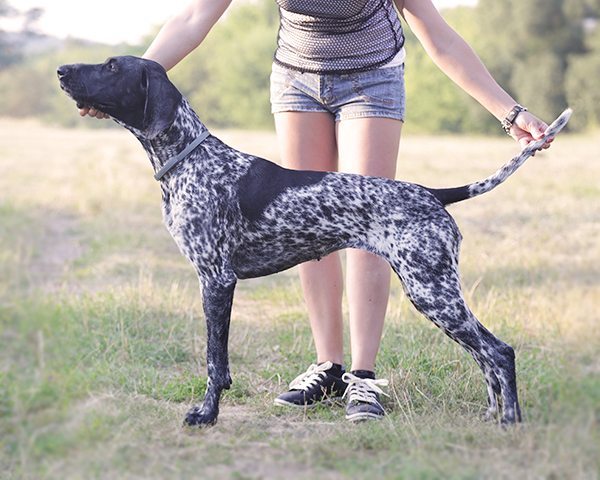 You can also play hide and seek games with your puppy.
You can also play hide and seek games with your puppy.
Usually, you should limit the amount of time you spend playing with your puppy. If you don’t, you may find yourself spending too much time chasing your puppy instead of getting work done.
The same goes for when you are taking your puppy for walks. Don’t forget to stop now and then so you can rest and stretch your muscles.
Ready To Train Your German Shorthair Pointer?
Our System Works. Period.
Train your GSP to be obedient, stimulate their mind and have a better pet experience.
Learn More
Think I’m kidding? You may not realize it, but bubbles are very entertaining for dogs. They love chasing them around and trying to catch them.
This activity helps to tire out your puppy because they are constantly moving. You can use balloons to create a bubble pit. Simply blow up a balloon and place it inside a plastic container.
Place the container near an area where your puppy likes to play. You can leave the container there all day long. Your puppy will probably enjoy chasing the bubbles around.
You can leave the container there all day long. Your puppy will probably enjoy chasing the bubbles around.
When you take your puppy outside, make sure you walk at least twice a day. It doesn’t matter if you’re walking in the park or going for a stroll along the beach. Just keep walking.
Walking is a great exercise for dogs. It strengthens their legs and improves their overall health.
Make sure you give your puppy plenty of water while you’re walking. He or she will drink more if you have some available. This can make your walk go by faster.
If you live in a dry climate, you can always turn on the sprinkler system. This will allow you to let your dog run around and chase after the water.
This is one of the most enjoyable activities for puppies. You can even put a toy in the water to attract your puppy’s attention.
When you’re finished playing with the water, simply shut off the faucet.
There are many ways to tire out your gerbil. However, you should not abuse your pet. Instead, you should treat your pet like a family member.
However, you should not abuse your pet. Instead, you should treat your pet like a family member.
Remember to always supervise your pets whenever they are outside. Make sure that you are aware of any signs of illness or injury.
Also, remember to provide your pet with plenty of food and water. In addition, you should also make sure that you clean your pet’s cage regularly. Finally, you should never neglect your pet.
More info:
Carhartt Tradesman Leash: Every dog owner needs a good leash, and all leashes are NOT treated the same.
This Carhartt dog leash is very well made, and is durable enough to deal with a GSP’s strength (yes, pulling too).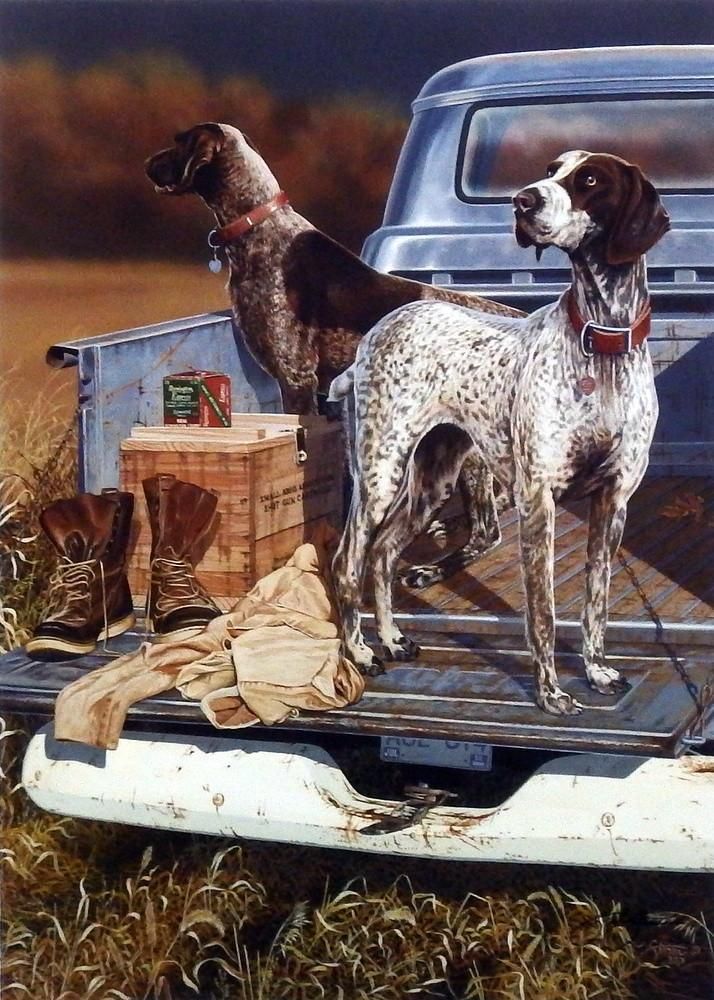 I’ve had cheap leashes in the past, they aren’t worth it, grab this instead.
I’ve had cheap leashes in the past, they aren’t worth it, grab this instead.
Furhaven orthopedic and Memory Foam Bed: If you have a GSP, you know, they LOVE to lay around, cuddle and sleep (when they aren’t running circles around the living room and yard.
This dog bed is so great because GSP’s love to rest their head on “pillows” just like humans and this dog bed has a built-in “pillow” perimeter that my dog uses every day as a pillow. Hank loves this bed.
SportDOG Brand 425X Remote Trainer: You know what sucks more than having your GSP run around the neighborhood or after a rabbit at your local park? Not having the ability to stop your GSP and recall them in an instant.
With the Sport Dog 425x, you have complete control for up to 500 yards (yes, 5 football fields end-to-end). Its battery lasts a LONG time, it’s sleek, lightweight and your pup won’t ever be out of your control with it on.
WEST PAW Zogoflex Qwizl Dog Puzzle Treat Toy: Our GSP’s love to play, even when we may not have the energy to entertain them ourselves.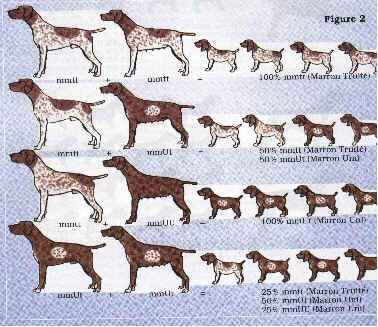 Maybe it’s work, maybe it’s the end of a long day, who knows.
Maybe it’s work, maybe it’s the end of a long day, who knows.
But, all you need to do is give this Kong to your GSP and they will entertain themselves for quite a while, while you finally get some rest. Hank has had this for years now and it’s still kickin!
GSP German Shorthaired Pointer Hat: Represent your GSP pride with this great trucker, snapback style German Shorthaired Pointer ball cap. It’s got a modern look but also shows others your favorite dog breed.
The best part? The glances and smiles from those who also have a GSP, it’s always a conversation starter!
Kurgo Baxter Backpack for Dogs, Saddlebag Back Pack Harness: I don’t know about you, but my GSP loves to adventure with us out here in Colorado. That means hiking, mountain biking, and camping all year.
Our GSP sees this saddle bag break out and he can’t stop wiggling his butt knowing where are headed outdoors.
Toss in the car keys, a snack bar and some kibble, you are on your way to outdoor fun with your pup!
URPOWER Dog Seat Cover Car Seat Cover: Ok, this is last but it is the MOST beneficial item you will get. Don’t, believe me, Take a road trip with your GSP in the back seat. Once you arrive, you will have GSP shedding hair all over your back sweat.
Don’t, believe me, Take a road trip with your GSP in the back seat. Once you arrive, you will have GSP shedding hair all over your back sweat.
This slick hammock-style seat cover creates a waterproof barrier between your lovely truck’s interior and your GSP’s shedding hair.
Hunting and having a wet GSP? No Problem! Did your GSP decide to chase a goose into the lake? No big deal! This seat cover is a lifesaver.
Without question, the German Pointer is a dog of exceptional energy! This is a wonderful trait, but all that excitement and enthusiasm can get out of hand sometimes. If you’re wondering if your rambunctious dog will EVER calm down, and how you can help, you’ve landed in the right place!
In this article, you’ll discover just how to exercise your German Pointer dog to tire him (or her!) out.
Being a big dog owner for most of my life, I assure you I’ve done extensive research and uncovered useful, accurate and helpful information! I rely on personal experience, combined with reputable experts and provable facts.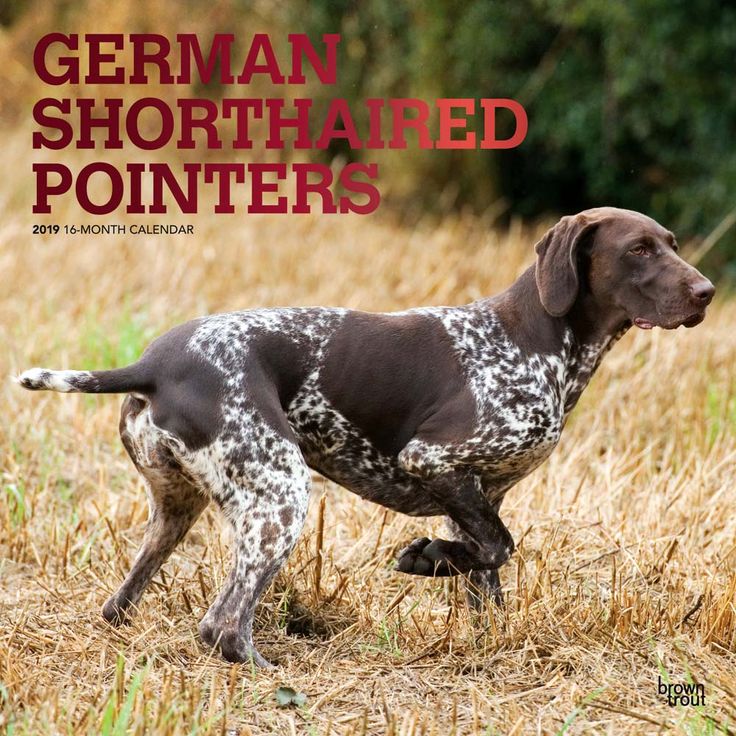 My veterinarian and sources like Pet Md keep me up-to-date on health issues concerning my big dog, and I’ve spent hours learning statistics from the American Kennel Club (AKC) and histories from Wikipedia. I take the expert’s advice and suggestions seriously and apply them to raise my dog(s). Cesar Milan is a wonderful resource, as well as the German Short-Haired Pointer Club of America (GSPCA).
My veterinarian and sources like Pet Md keep me up-to-date on health issues concerning my big dog, and I’ve spent hours learning statistics from the American Kennel Club (AKC) and histories from Wikipedia. I take the expert’s advice and suggestions seriously and apply them to raise my dog(s). Cesar Milan is a wonderful resource, as well as the German Short-Haired Pointer Club of America (GSPCA).
Today I’ll share all I’ve learned using the mentioned combined resources I just cited with you! We’re going to cover a lot of information today! In this article, you’ll discover:
…And so very much more! I’ll be answering some of the most frequently asked questions (FAQ) I receive about exercise as it pertains to a German Pointer Dog, and throwing in interesting “Pointer Facts” as we go along.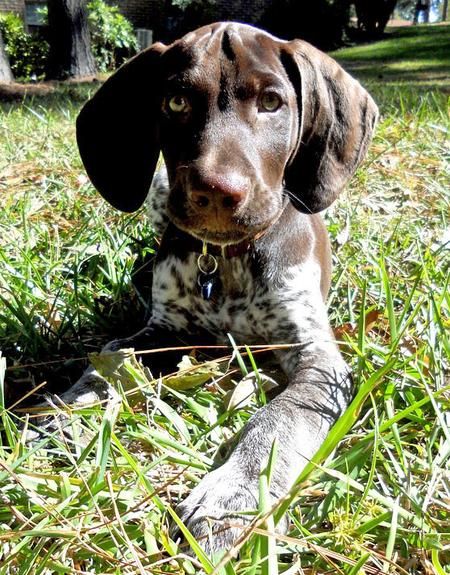
I’m glad you’re here, and I value your time, so let’s get right to it!
FAQ: Why is my German Pointer so Hyper?Often, we can know much about a dog breed by studying its history. This is a little bit more difficult with the German Pointer Breed, though. Little is known about the development of the breed before the late 1800s. The AKC, who didn’t officially recognize the breed until the 1930s, surmises that the breed descended from an ancestry of German Bird Dogs, which are related to the English Pointer. Mixed in the heritage, were likely various German hounds and tracking dogs.
What we do know is that the earliest records of the German Pointer breed show it produced avid hunters, with high levels of physical endurance, an above-average intelligence, and a keen sense of scent for hunting, tracking, and rescuing stranded humans. Doing these things takes a high energy level, and that high energy is inherent in the pets we love today!
You’ll be relieved to know that you can guide your German Pointer to better direct all that energy through a proper and adequate exercise routine.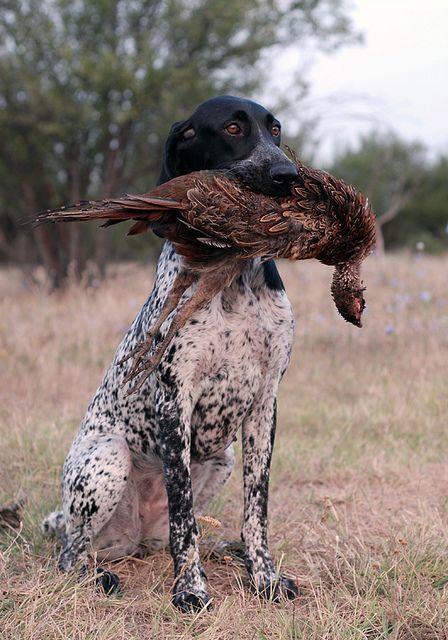 Exercise alone won’t produce all the results you’re likely seeking in your dog’s behaviors, though! Keep reading to learn what factors combined will make your German Pointer healthy, active, well-rounded in temperament, and tired at the end of the day!
Exercise alone won’t produce all the results you’re likely seeking in your dog’s behaviors, though! Keep reading to learn what factors combined will make your German Pointer healthy, active, well-rounded in temperament, and tired at the end of the day!
POINTER FACT:
A German Pointer named Colter is featured in a delightful book by Author Ricky Bass. Ricky writes of his adventures with the runt of the litter and gives us revealing glimpses of how amazing this dog breed can be. You can grab a copy from Amazon to enjoy by following this handy link!
There’s no question about it! Your German Pointer Dog ranks high in his (or her) requirements for daily exercise! However… (there’s always a “however“, isn’t there?) too much exercise can cause permanent injury to a growing German Pointer Puppy. Before the puppy is weaned, his mother best knows what he needs, exercise-wise.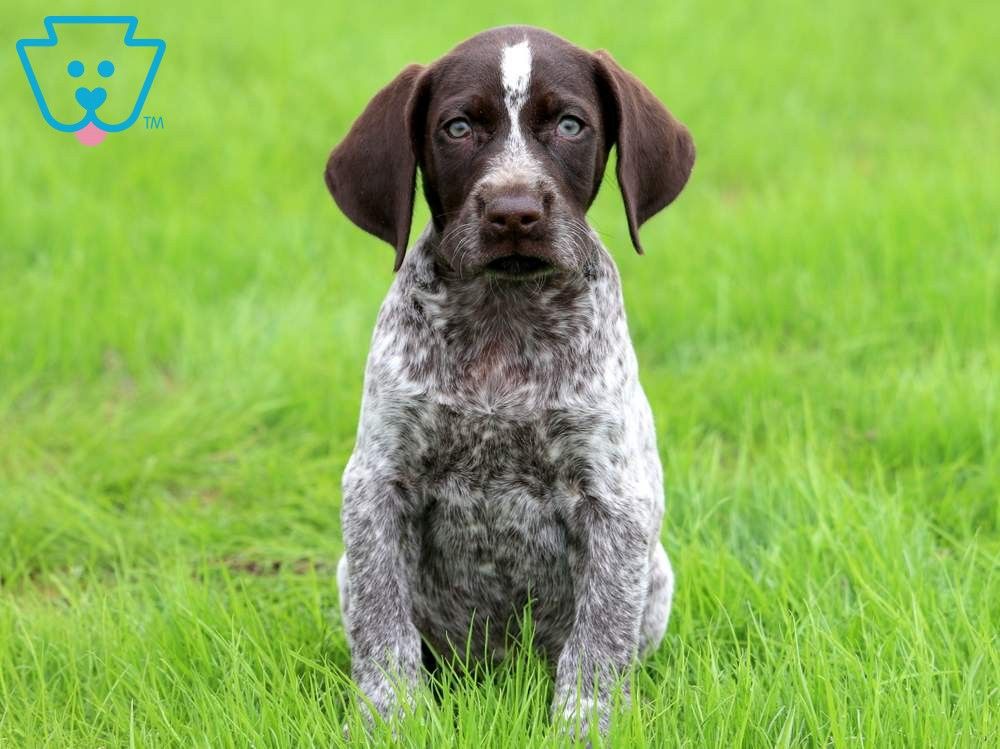
If you’re fortunate enough to witness this good parenting, you’ll see the mother dog encouraging exercise through play. The cool thing is, you’ll also see the mother give a clear and concise “message” when playtime is over and it’s time to rest. This “message” will likely come in the form of a serious growl, and maybe even a snap or a nip from mother. She inherently knows what we must learn, the balance between exercise and good rest for our puppy or adult dog.
You should begin exercising your German Pointer when he (or she) is weaned from the mother or the day after the dog arrives in your home, whichever applies. The rule of thumb is the younger the pup, the less “targeted” exercise he needs. Please continue to discover what the exercise needs are are the different phases of your German Pointer’s life.
FAQ: How Much Daily Exercise do German Pointer Dogs Need?Your German Pointer dog has four distinct physical phases to his (or her) life span. When it comes to exercise that is effective in tiring your dog out and promoting all-over health, each phase has its own demands, and they differ! Let’s break it down to find out what activity level and exercise regime is best for each of the four life-phases:
When it comes to exercise that is effective in tiring your dog out and promoting all-over health, each phase has its own demands, and they differ! Let’s break it down to find out what activity level and exercise regime is best for each of the four life-phases:
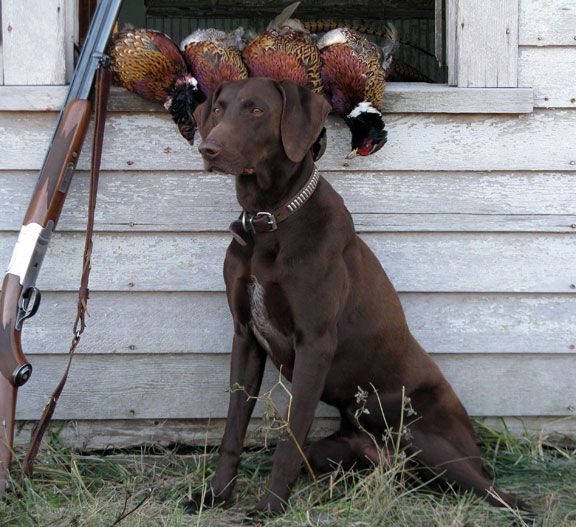 You’ll find good ideas for these “outings” further along in the article.
You’ll find good ideas for these “outings” further along in the article.I would be remiss not to mention that the references above are general guidelines.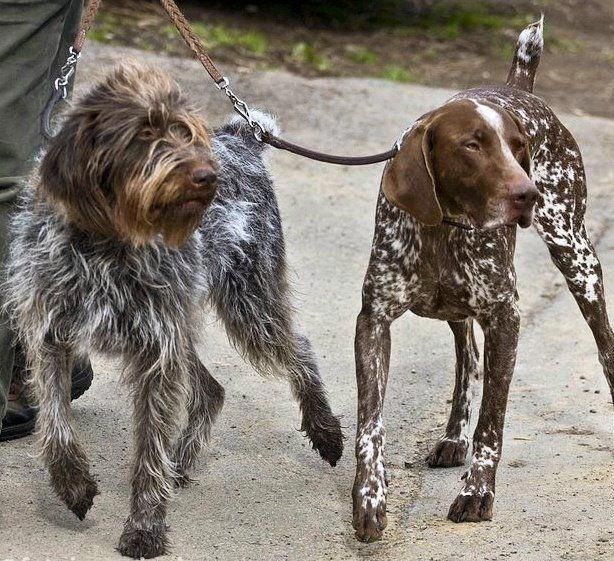 Each dog, like each human, is unique. In your German’s Pointer’s puppyhood, adolescence, and adulthood, here are the indicators he (or she) is getting enough exercise (but not too much). I’ll start with the most important manifestation of adequate exercise in your dog’s life:
Each dog, like each human, is unique. In your German’s Pointer’s puppyhood, adolescence, and adulthood, here are the indicators he (or she) is getting enough exercise (but not too much). I’ll start with the most important manifestation of adequate exercise in your dog’s life:
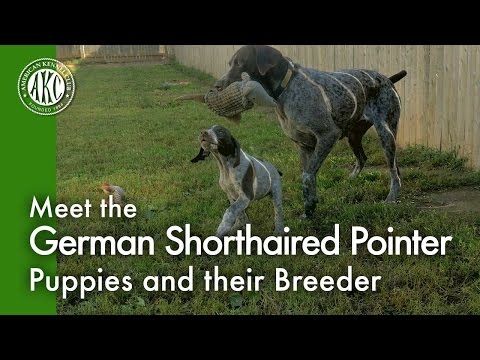
POINTER FACT: Your healthy German Pointer Dog will likely live between 12-14 years… that’s a lot longer than many dog breeds! I’m positive you’ll want to that lifespan to be filled with as much health and vigor as possible for your beloved companion, and by the end of this article, you’ll be confident that sufficient exercise is a key component to both health and vigor! Let’s continue.
There are two benefits to you when your German Pointer Dog has a sufficient exercise regime for each of the four phases of his (or her) life.
There are 4 key factors that affect your dog’s health, energy level, and longevity. These are:
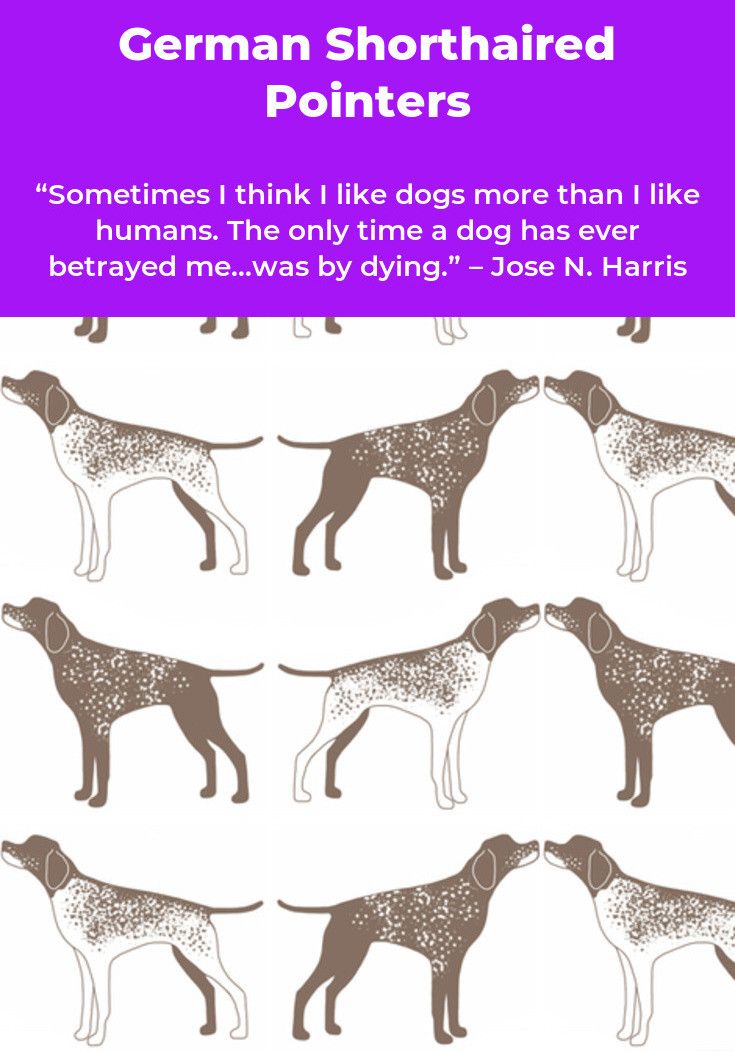 Aside from physical and temperamental traits, your dog may have also inherited a propensity toward certain health conditions from his (or her) ancestors. Specifically, German Pointers may have problems with issues later in life with hip dysplasia, hypothyroidism, epilepsy, certain skin conditions and lesions in the mouth. Additionally, unspayed females have a higher risk of breast cancer. Your dog’s veterinarian will discuss each of these health issues with you, and advise you on the best course(s) of action.
Aside from physical and temperamental traits, your dog may have also inherited a propensity toward certain health conditions from his (or her) ancestors. Specifically, German Pointers may have problems with issues later in life with hip dysplasia, hypothyroidism, epilepsy, certain skin conditions and lesions in the mouth. Additionally, unspayed females have a higher risk of breast cancer. Your dog’s veterinarian will discuss each of these health issues with you, and advise you on the best course(s) of action.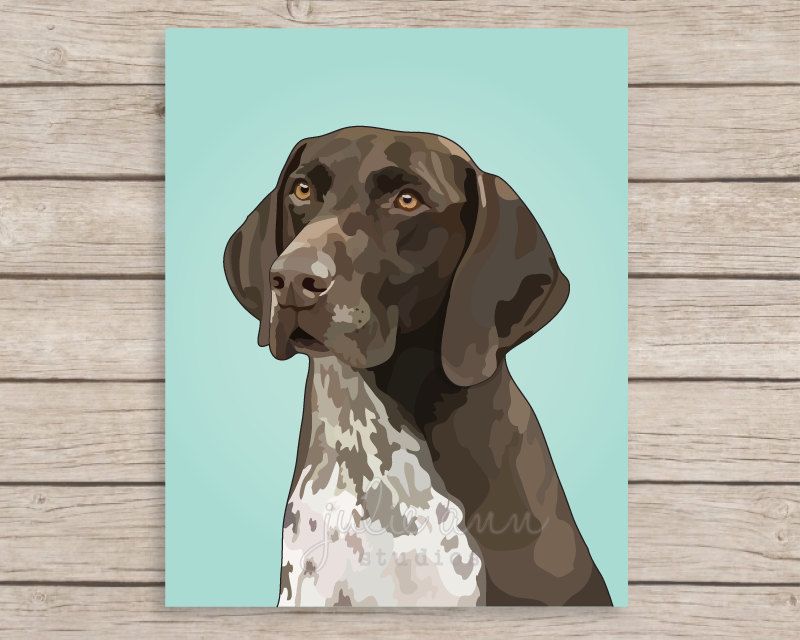
Earlier in this article, I mentioned some “outings” that are great ways for your german Pointer Dog to burn energy in addition to his (or her) routine walks and independent play.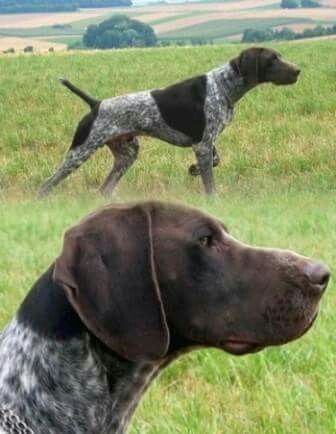 Before we proceed to this “super solution” for quickly tiring out your dog, I would like to take a moment to stress the importance of a regular and consistent daily exercise routine with regular and consistent additional activities at least weekly. As it is with each of us, there is no “fast track” to health.
Before we proceed to this “super solution” for quickly tiring out your dog, I would like to take a moment to stress the importance of a regular and consistent daily exercise routine with regular and consistent additional activities at least weekly. As it is with each of us, there is no “fast track” to health.
However (there’s that word again!) there are times when you’ll want to add some additional exercise/activity in your German Pointer’s day in a minimal amount of time. Truly, I hope the reason you’re feeling rushed sometimes is a good reason, like a special dinner date, or tickets to a concert uptown for later.
Please remember that the time you spend out exercising your dog is another opportunity to reinforce the bond between the two of you. The fresh air and exercise can also promote your own health and both have been proven to reduce stress in humans and canines, alike… BONUS!
The following 7 Activities and/or Outings will quickly and efficiently tire your German Pointer out with a quickness:
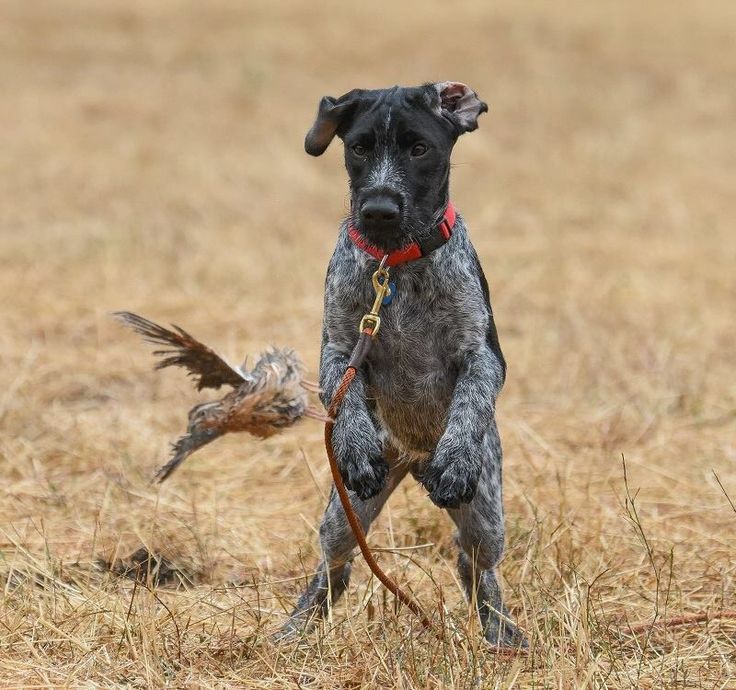 I don’t want this important playtime to be cut tragically short by injury!
I don’t want this important playtime to be cut tragically short by injury! Furthermore, it isn’t only physically stimulating, but mentally stimulating, as well, helping to stave off boredom. If you’ve never heard of a flirt pole, check it out by following this convenient link to Amazon to learn more :
Furthermore, it isn’t only physically stimulating, but mentally stimulating, as well, helping to stave off boredom. If you’ve never heard of a flirt pole, check it out by following this convenient link to Amazon to learn more :POINTER FACT: The United States Air Force, as well as the Transportation Security Administration (TSA), both use German Pointer Dogs for bomb detection. I’m not entirely sure how I feel about that and do believe I would rather see a robot used, but understand that human life must take precedence and that German Pointers have a WAY better sense of smell than any human.
TIP 1: One Hour of “Off-Leash” Exercise Every Day, if at all possible, for your German Pointer Dog.
It’s important to know that this should begin after your German Pointer has mastered the 5 Basic Dog Commands. These commands are: Come! (Your dog comes when you call.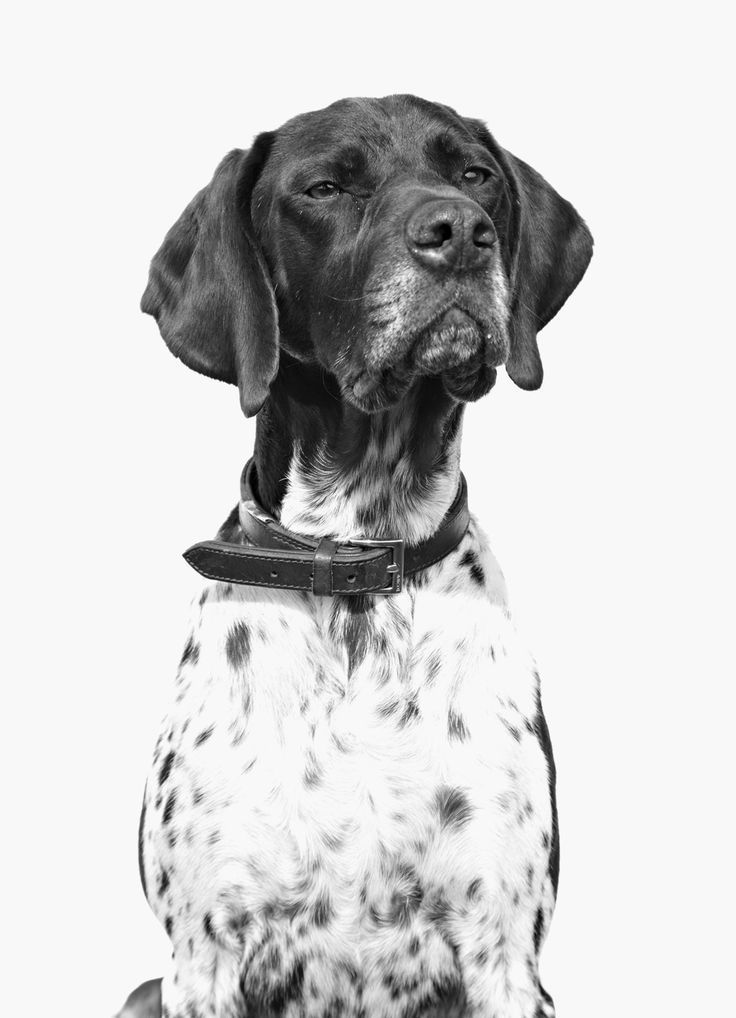 ) Heel! (He (or she) walks alongside you on a walk, neither lunging nor meandering.) Sit! (Self-explanatory.) Down! (Your dog lays prone on command.) and Stay! (The dog will remain in his location when commanded, even if you leave the room.)
) Heel! (He (or she) walks alongside you on a walk, neither lunging nor meandering.) Sit! (Self-explanatory.) Down! (Your dog lays prone on command.) and Stay! (The dog will remain in his location when commanded, even if you leave the room.)
Mastering these commands before allowing your German Pointer to go off-leash for exercise is, of course, for his (or her) safety, as well as for the safety of the humans and animals around them.
TIP 2: Utilize the Environment to add variety and agility challenges to a routine walk. Train your dog to jump small obstacles, find steps to ascend and descend with him (or her). Use your imagination! Take advantage of local parks that are pet-friendly, as well as hiking trails and beaches. Increase the pace when you’re walking up land that is inclined.
TIP 3: Your German Pointer receives a rush of pleasurable endorphins when exercising just as you do! For this reason, Don’t Encourage Vigorous Exercise Just Before Bed.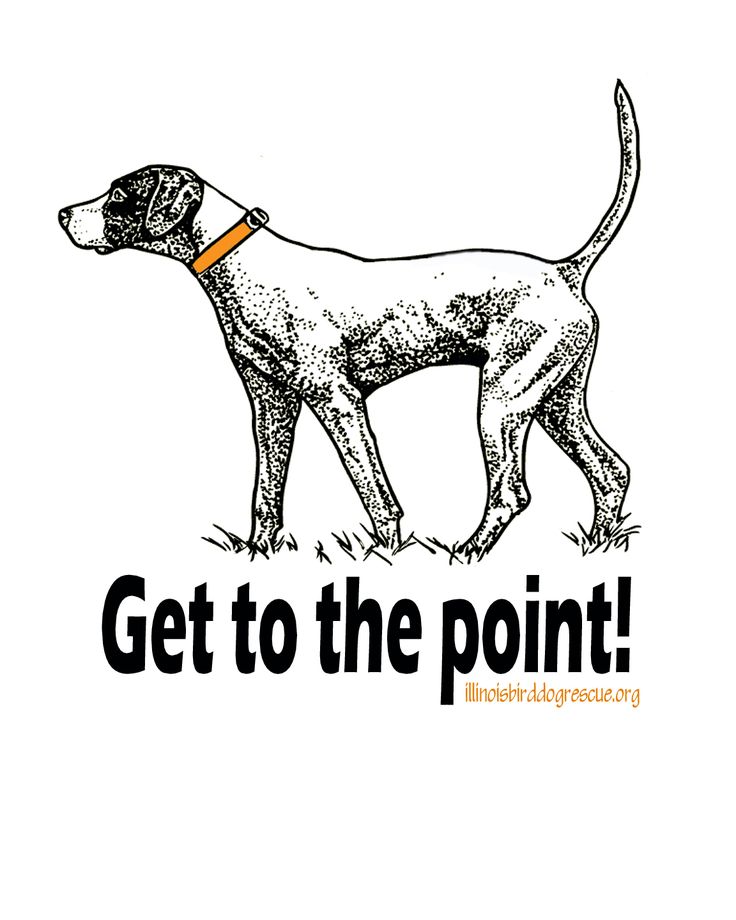 I recommend your last walk before bedtime to end 30 minutes before bedtime. Your smart dog catches onto routines quickly and easily and adjusts his (or her) behavior accordingly. The pro trainers further recommend (and I agree through experience) that it’s good to have a “cool-down” routine at the end of exercise time. This displays a recognizable gesture that it’s time to transition from rambunctious to relaxed as the day draws to a close.
I recommend your last walk before bedtime to end 30 minutes before bedtime. Your smart dog catches onto routines quickly and easily and adjusts his (or her) behavior accordingly. The pro trainers further recommend (and I agree through experience) that it’s good to have a “cool-down” routine at the end of exercise time. This displays a recognizable gesture that it’s time to transition from rambunctious to relaxed as the day draws to a close.
Long broad strokes along your dog’s side, back, and belly (if you’re “invited”) is one great way to do it. You can use a soft-bristled dog brush, or just your open hand. Speak softly and don’t be shy with the praises as your dog calms. Remember, pleasing you is your German Pointer’s number one priority on this earth. Let him (or her) know when you’re pleased!
TIP 4: The more dogs, the more playtime! Enroll your German Pointer in Doggie Daycare. My dog, so reports the daycare owner (with tons of photographs to back her claims up) spends hours a day frolicking with the other dogs there! This is also a great opportunity to keep your dog well-socialized!
Doggie Daycare: Exercise Through Play!To learn more about socializing your German Pointer Dog (along with some facts you really should be aware of) please read “Are Big Dogs REALLY More Aggressive?” right here in the Big Dog Den!
TIP 5: The German Pointer Dog is renowned for being friendly and out-going.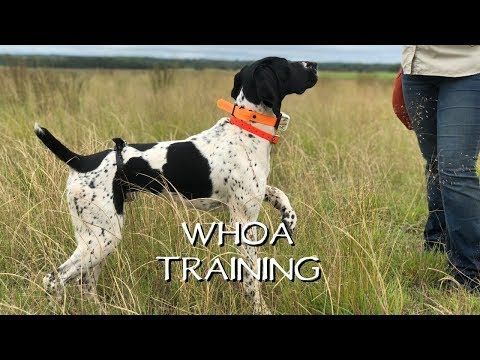 He (or she) will likely get more exercise through play with a friend, so Utilize Some Friends! Human or animal! Get your friends and family involved in exercising your German Pointer or get another dog (or any animal). I’m astounded by how much fun (and exercise) a Rottweiler named Maximus has with his best bud and house-mate, a kitty-cat named Oreo! He is twice as active as he was before the cat moved in, and snores loud enough at night for everyone to know he is sufficiently tired, LOL!
He (or she) will likely get more exercise through play with a friend, so Utilize Some Friends! Human or animal! Get your friends and family involved in exercising your German Pointer or get another dog (or any animal). I’m astounded by how much fun (and exercise) a Rottweiler named Maximus has with his best bud and house-mate, a kitty-cat named Oreo! He is twice as active as he was before the cat moved in, and snores loud enough at night for everyone to know he is sufficiently tired, LOL!
I certainly understand that question! With so much abounding energy, it’s easy to imagine a catastrophe unfolding if such energy was used with ill-intent, but take heart! German Pointers have received some of the highest-rankings in friendliness by those who do the ranking. I want to be perfectly clear on one issue, though. A German Pointer is a dog, and all dogs have the capacity and tendency to bite in certain circumstances.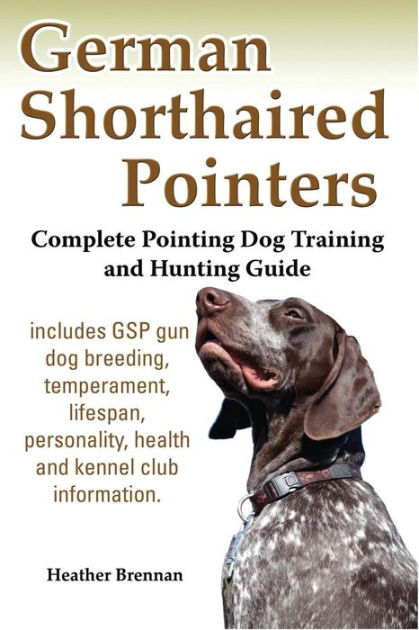
For this reason, a responsible owner of a German Pointer is ever-aware of biting safety and takes precautions where necessary.
Aside from the fact that any dog might bite when they are frightened, feel threatened, or are hurt, all that energy could accidentally produce injury as well. All dogs should be supervised when in the company of small children and other animals.
POINTER FACT: The AKC recognizes 8 colors for the German Pointer breed standard. Your dog’s nose will be the same color as the solid color in his (or her) coat.
So now you know your German Pointer is going to need a lot of daily exercises to keep him from being bored and potentially becoming destructive. Aside from that, I’ve picked up 3 Useful hacks to help calm a German Pointer on days where the exercise schedule is askew, like on rainy days or ludicrous schedule days. These are:
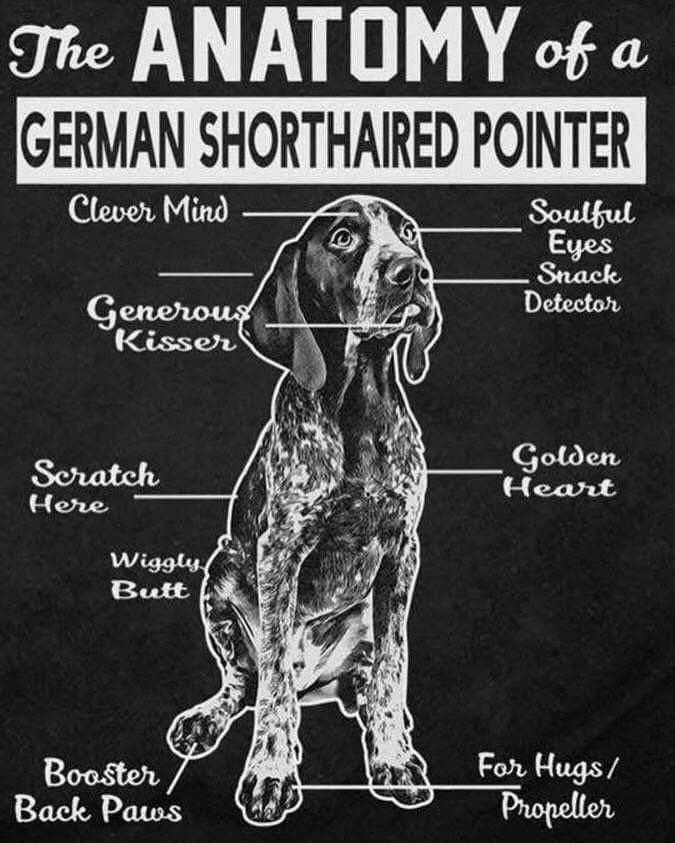 It comes in various sizes, can be filled with peanut butter or other treats, and is designed so that a dog can’t get his muzzle stuck if he is playing unattended. You can check it out on Amazon by clicking on this link.
It comes in various sizes, can be filled with peanut butter or other treats, and is designed so that a dog can’t get his muzzle stuck if he is playing unattended. You can check it out on Amazon by clicking on this link. Make sure the plush toy has no small pieces that can be chewed off and pose a choking risk, and encourage your dog with affection and praises as he (or she) settles in with his “second-best friend” because you’re his (or her) first-best friend! Here’s a great one on Amazon, check it out!
Make sure the plush toy has no small pieces that can be chewed off and pose a choking risk, and encourage your dog with affection and praises as he (or she) settles in with his “second-best friend” because you’re his (or her) first-best friend! Here’s a great one on Amazon, check it out!Whew! Sometimes I wish I could absorb some of that delightful German Pointer energy right into my workweek, LOL! How about you? I hope today’s article was informative and useful to you. I was amazed by some of the things I learned about this loyal, happy, and (very) energetic dog breed! I’ll “see” you again around the Big Dog Den! Best wishes to you and your four-legged friend(s)! I leave you with one more POINTER FACT that you should know:
The National German Short-Haired Pointer Rescue is a treasure trove of information about how YOU can help save the life of one (or more) of these gentle and loving dogs! Please check out their website at the other end of this link to learn more.![]() In the United States alone, more than 670,000 dogs are euthanized annually simply for being unwanted. You can help reduce that figure by considering adopting a German Pointer Dog from a rescue organization or shelter near you!
In the United States alone, more than 670,000 dogs are euthanized annually simply for being unwanted. You can help reduce that figure by considering adopting a German Pointer Dog from a rescue organization or shelter near you!
*This article has been reviewed in accordance with our editorial policy.
Whoever catches the eye of this dog, even a person who is far from hunting passion and does not know the real name of the breed, it is always called hunting. Indeed, the appearance of the German short-haired cop, or shorthaired pointer, is truly hunting.
Shorthaired pointer is an unsurpassed pointing dog for working in the field, has an excellent instinct, swims excellently. He is well trained, obedient, and, in addition, unusually effective.
What is KURTSHAAR….
Translated from German, "kurtshaar" means "short-haired". The origin of the kurtshaar is closely connected with the emergence and development of the short-haired cops of continental Europe - marriages that have long been used for hunting with birds of prey. These dogs have existed for a long time and appeared primarily in the Mediterranean countries. This is primarily Italy, Spain, France, and from there they spread throughout Europe. By the 15th century, short-haired cops began to acquire pedigree characteristics. The formation of the breed was strongly influenced by the Pachons, an ancient Iberian breed, which were crossed with the local German Hanoverian Hound. An even greater influence on the breed was made by perdigero Burgos - Spanish marriages. Thus, a certain type of dog gradually took shape, eventually embodied in the old German Wurtenberg cop. By the 70s of the 19th century, active work began in Europe to restore national breeds. In Germany, this role began to be played, first of all, by the Württemberg cop. However, the old German marriage required a more elegant appearance, increased flair and speed. To this end, they began to add the blood of a pointer to him. In 1872, the first studbook for kurtshaars was opened. A single breed standard was adopted in Germany - in 1879
These dogs have existed for a long time and appeared primarily in the Mediterranean countries. This is primarily Italy, Spain, France, and from there they spread throughout Europe. By the 15th century, short-haired cops began to acquire pedigree characteristics. The formation of the breed was strongly influenced by the Pachons, an ancient Iberian breed, which were crossed with the local German Hanoverian Hound. An even greater influence on the breed was made by perdigero Burgos - Spanish marriages. Thus, a certain type of dog gradually took shape, eventually embodied in the old German Wurtenberg cop. By the 70s of the 19th century, active work began in Europe to restore national breeds. In Germany, this role began to be played, first of all, by the Württemberg cop. However, the old German marriage required a more elegant appearance, increased flair and speed. To this end, they began to add the blood of a pointer to him. In 1872, the first studbook for kurtshaars was opened. A single breed standard was adopted in Germany - in 1879
APPEARANCE
A high-fronted, proportionately built, energetic dog, with beautiful forms, with strong but not coarse bones, with well-developed elongated muscles and free, easy movements.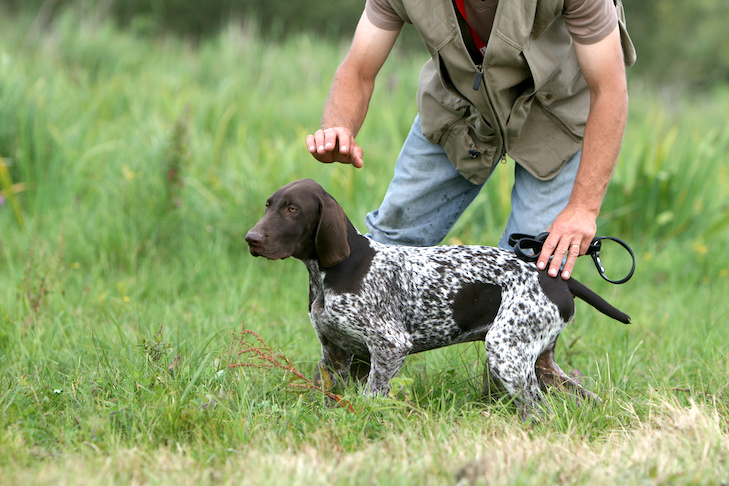
Height at withers males 62 - 66 cm, females 58 - 63 cm. Index of stretching males 101 - 103, females 102 - 105. The coat is short, shiny, straight, hard, thick, 1.5 - 2 cm long along the body and neck. Wavy hair is a vice. The skin is moderately thick, dense, elastic, without folds. The muscles are strong and elastic. The head is dry, not heavy, somewhat elongated. When viewed from above and from the side, it is strictly wedge-shaped, but not pointed. The cranial part is not wide, slightly convex. The occipital protuberance is not strongly expressed. The transition from forehead to muzzle is smooth. The muzzle is elongated, not wide, slightly tapering towards the nose, with a hump. The lips are not heavy, fitting to the jaws. The nose is wide, matching the main color. Ears hanging, somewhat high set. The eyes are expressive, of medium size, set obliquely. The eyelid fits snugly, with an oval incision. Eye color is dark brown. Bite - "scissors", a complete set of teeth is required.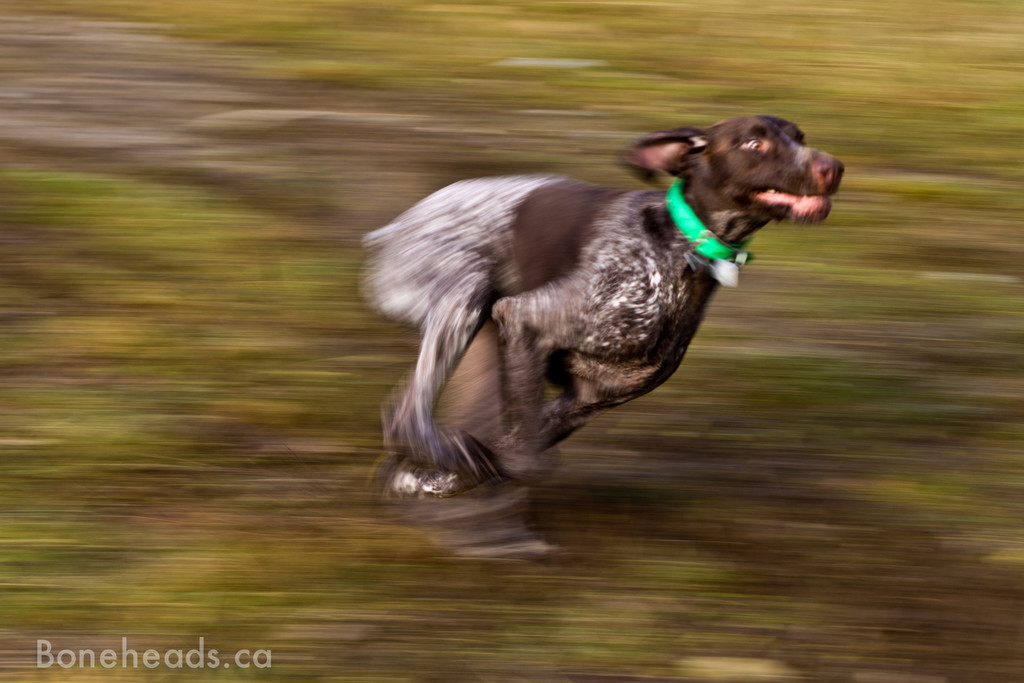 The neck is of moderate length, slightly arched at the top, without dewlap. The length of the neck is approximately equal to the length of the head. The withers are well defined, protrude above the line of the back. The croup is long, muscular, broad and slightly sloping.
The neck is of moderate length, slightly arched at the top, without dewlap. The length of the neck is approximately equal to the length of the head. The withers are well defined, protrude above the line of the back. The croup is long, muscular, broad and slightly sloping.
KURCHAAR IN RUSSIA
In our country, kurtshaars appeared at the beginning of the 19th century, but until the end of the last century they did not receive due recognition, despite the fact that after the October Revolution they had fans in cynological circles. Among them, M.D. Mendeleeva-Kuzmina, who, trying to convey to the hunters the meaning of the purpose of the shorthaired pointer, wrote: “It should be remembered that cynology should serve hunting. There is only one way: the interests of the hunter and the cynologist must merge; therefore, it is necessary to give hunters a dog that is most suitable for hunting purposes, obedient, with a good search, which it could change as needed, sensitive and possessing a versatile hunting mind, not narrowly specialized.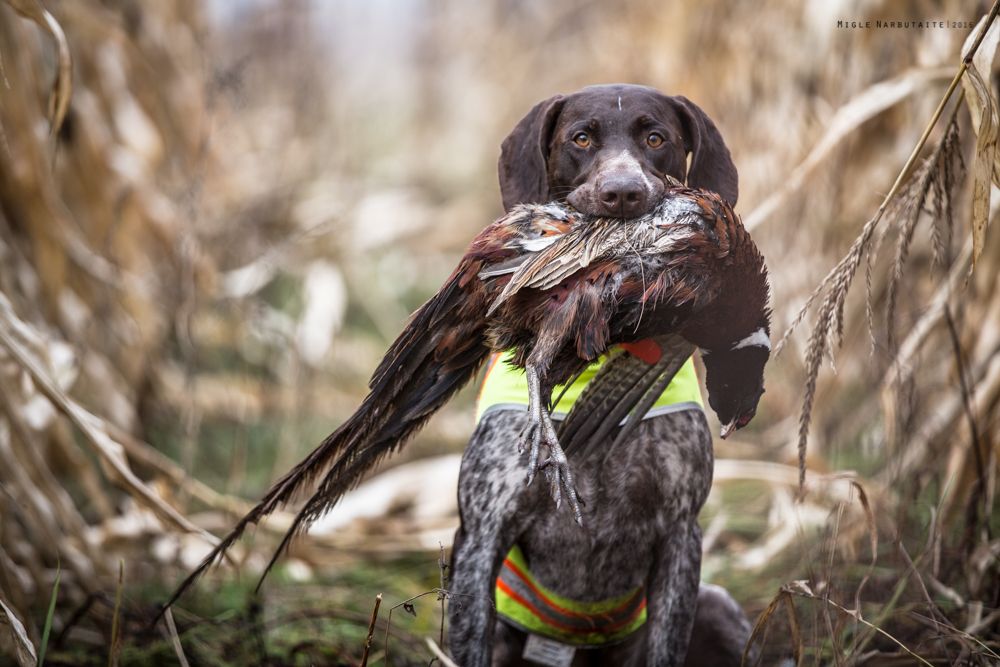 The fact is that shooting from under a pointing dog gave the hunt more of a sporting direction. Under these conditions, the kurtshaar, which was inferior to the island cops both in flair, and in the speed of movement, and in the style of work, did not find due recognition. And the universality of the cops at that time was treated quite skeptically. But in fact, the inborn makings of a kurtshaar were well suited for our various hunts. The hunters appreciate it. Let us recall the breeds of the so-called Russian cops: Pushkin, Dmitrovsky, Oryol, and others. Most of them were short-haired and in fact were nothing more than various crossbreeds of German and other marriages with pointers.
The fact is that shooting from under a pointing dog gave the hunt more of a sporting direction. Under these conditions, the kurtshaar, which was inferior to the island cops both in flair, and in the speed of movement, and in the style of work, did not find due recognition. And the universality of the cops at that time was treated quite skeptically. But in fact, the inborn makings of a kurtshaar were well suited for our various hunts. The hunters appreciate it. Let us recall the breeds of the so-called Russian cops: Pushkin, Dmitrovsky, Oryol, and others. Most of them were short-haired and in fact were nothing more than various crossbreeds of German and other marriages with pointers.
After the Great Patriotic War, the number of kurtshaars in the country increased dramatically due to the "trophy" dogs taken out of Germany. But at first, breeding work with these dogs was carried out only in the direction of increasing the range of instinct and speed of movement. After all, the rules for testing pointing dogs were the same and they were focused mainly on the qualities of island pointers.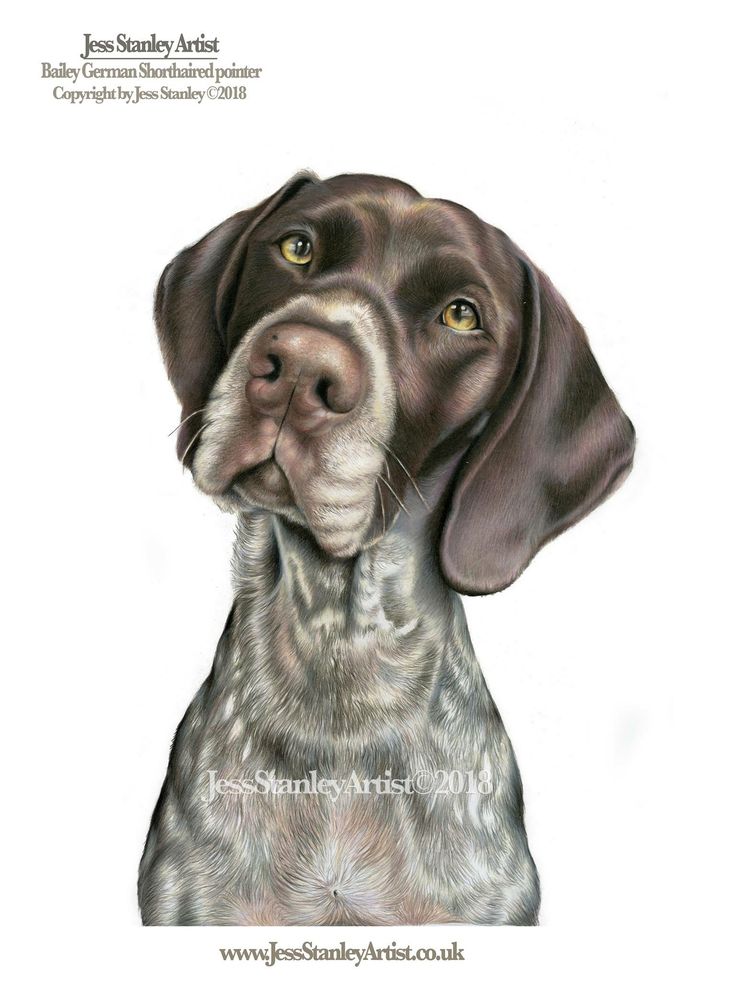 For example, there was no requirement in the rules for retrieving dead game.
For example, there was no requirement in the rules for retrieving dead game.
Only by the end of the 1970s, cynologists began to form a common opinion in approaches to the kurtshaar as a versatile pointer. This was facilitated by the introduction of rules for testing continental cops on a blood trail, duck, aviary boar (complex tests) and permission for the practical use of these dogs in these hunts.
In our time, the kurtshaar is no longer the short-sounding and slow-moving dog that it was in the middle of the last century. And in the speed of movement and in the range of instinct, the representatives of this breed are very close to the island cops. And the ability to use the lower instinct and retrieve the beaten game gives this breed great advantages over pointers and setters, since it makes it possible to quickly switch from one type of game to another, including fast-running birds (corncrake, black grouse, pheasant, capercaillie), and to waterfowl.
One of our oldest trainers-practitioners I. I. Anikeev: “By instinct, the kurtshaar is a little inferior to the setters, but in terms of production, in my opinion, it should still be in the first place. In training and training, the kurtshaar is more pliable than the setter. Feeding killed and wounded game is his innate quality, learning this is not difficult. Works well on meadow, upland and swamp game. If one hunter walked with a kurtshaar through any swamp, there is nothing to do with ten setters. No matter how many killed and wounded game, not only by you, but also by other hunters, all of it will be in your game bag.
I. Anikeev: “By instinct, the kurtshaar is a little inferior to the setters, but in terms of production, in my opinion, it should still be in the first place. In training and training, the kurtshaar is more pliable than the setter. Feeding killed and wounded game is his innate quality, learning this is not difficult. Works well on meadow, upland and swamp game. If one hunter walked with a kurtshaar through any swamp, there is nothing to do with ten setters. No matter how many killed and wounded game, not only by you, but also by other hunters, all of it will be in your game bag.
Responsible for the breed German Hound in NOKOS: Sivkov Dmitry Elizvoevich tel. 439-26-69.
All breeds
up| Genres
|